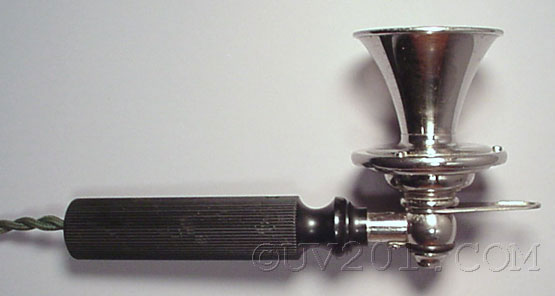|
Hand-Held Carbon Microphones |
||
| The microphones shown here are typical of the many hand-held carbon units that were made in the 1920's and 1930's. These were primarily for non-broadcast radio and public address applications. | ||
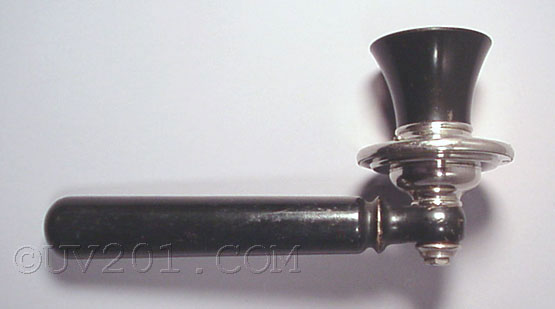 |
||
| Shown above is a very early
microphone of a type that would have been used by an amateur radio
operator in the early 1920's. It is unmarked, and I have no idea
who made it, but one very much like it appears in an image from a 1921
advertisement for De Forest radio equipment, as seen below. The shell is nickel plated brass, and the handle is wood. The mouthpiece is identical to those used on the telephones of the day. Most carbon microphones had metal diaphragms and a single circular compartment for the carbon granules (two if it was a "double button" design). This microphone used a thin disk of carbon (or graphite) as the diaphragm, and there are six pie-slice shaped compartments for the carbon granules formed by a thick felt separator. This design, effectively, created six microphones which were connected in parallel. This increased the current carrying capacity of the unit, and reduced the need for additional audio amplification. Too much current would cause the granules to fuse together, and the microphone would no longer function. The Ericsson microphone shown below has the same internal design as this one. |
||
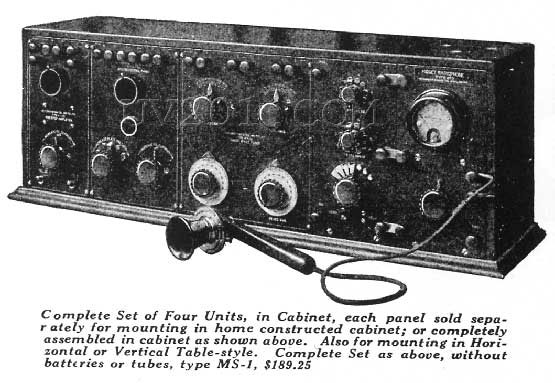 |
||
|
|
||
| This microphone was made by
Ericsson Telephones, Ltd., a British subsidiary of the Swedish L. M.
Ericsson company.
Ericsson was primarily a manufacturer of telephone and telegraph equipment, but it would seem that they ventured into the radio field as well. Ericsson had an operation in England since 1903, but the name Ericsson Telephones, Ltd. came into use early in 1926, so this microphone was made sometime after that date, and probably no later than the early 1930's. This microphone is very similar in design and construction to the handsets on Ericsson telephones. The internal design, however, confirms that this unit was not made for telephone use. |
||
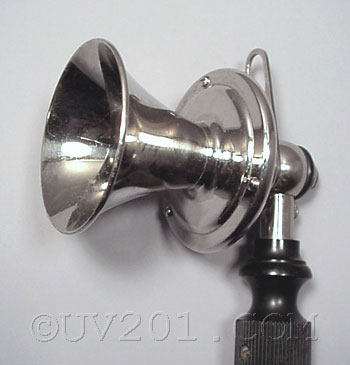 |
||
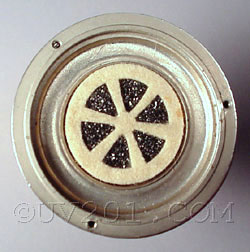 |
||
| In this internal view of the Ericsson microphone, the six compartments containing carbon granules separated by a piece of very thick felt can be seen. The granules contacted the conductive diaphragm at the front, and the metal housing at the rear. | ||
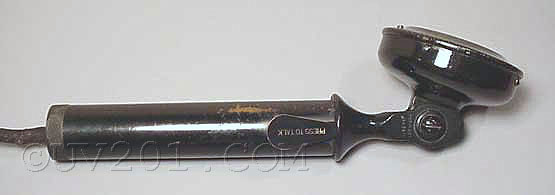 |
||
| The Western Electric D90800 shown here is almost identical to the Navy CW-930 and is probably from the 1920's. Note the "Press to Talk" button on the side. | ||
 |
||
 |
||
| The "Handi-Mike" was made by the Universal Microphone Company, located in Inglewood, California. It was an inexpensive unit, a single-button carbon design, made for amateur radio or public address applications. It was in the catalog throughout the 30's, and came in the faux bronze finish seen here, or chrome plated. Later units had a slide switch, rather than the toggle switch, and it could also be had with a crystal element. | ||
 |
||
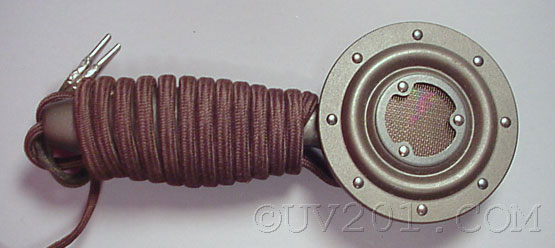 |
||
| This single-button carbon
microphone was made by the Kellogg Switchboard and Supply Company of
Chicago, and was found in unused condition, in its
original plain cardboard box, with the cord still neatly wrapped around
the handle. A sticker showed the price to be $8.50. It is nearly identical to the ones that RCA supplied with its home recording outfits in the mid 1930's. These were expensive radio-phonograph combinations, with the capability to record as well as play 78-RPM disk records. The version that RCA used had a small sheet metal mouthpiece, rather than the plain front version shown here. It was identical, otherwise. |
||
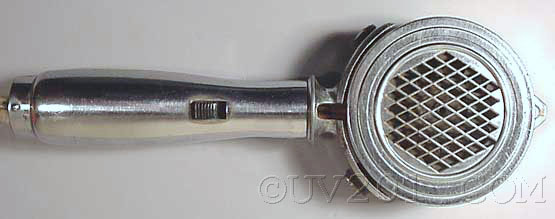 |
||
| This is a double-button carbon microphone made by American Microphone of Los Angeles, in the early 1930's. It may have originally been sold with a base into which the bottom of the handle was inserted, but that is now missing. It appears that American relocated to Pasadena sometime in the 30's, as their later mikes (D7TPR and D-33) show the new location. | ||
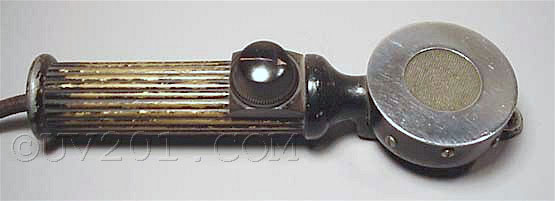 |
||
| This microphone is not marked, but it is believed that it was sold under the Samson name in the early 1930's. It is a single-button type, with an integral volume control, a very unusual feature. | ||
